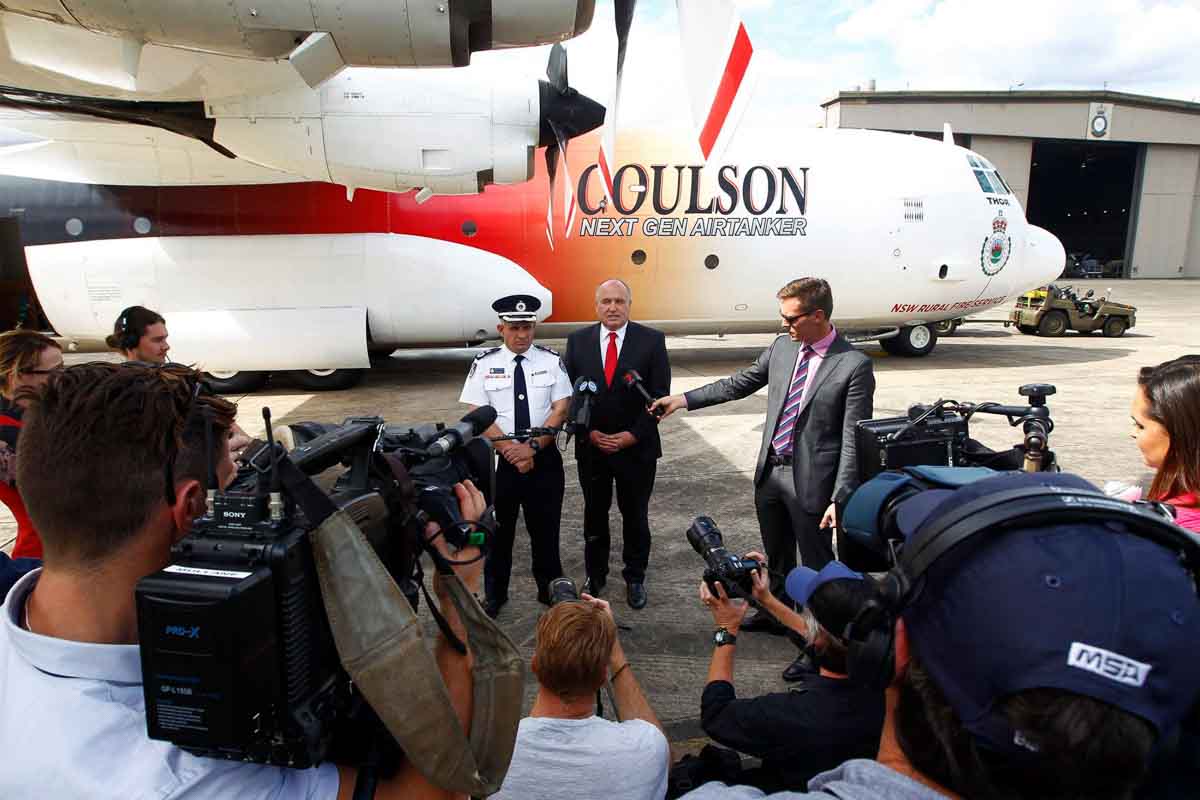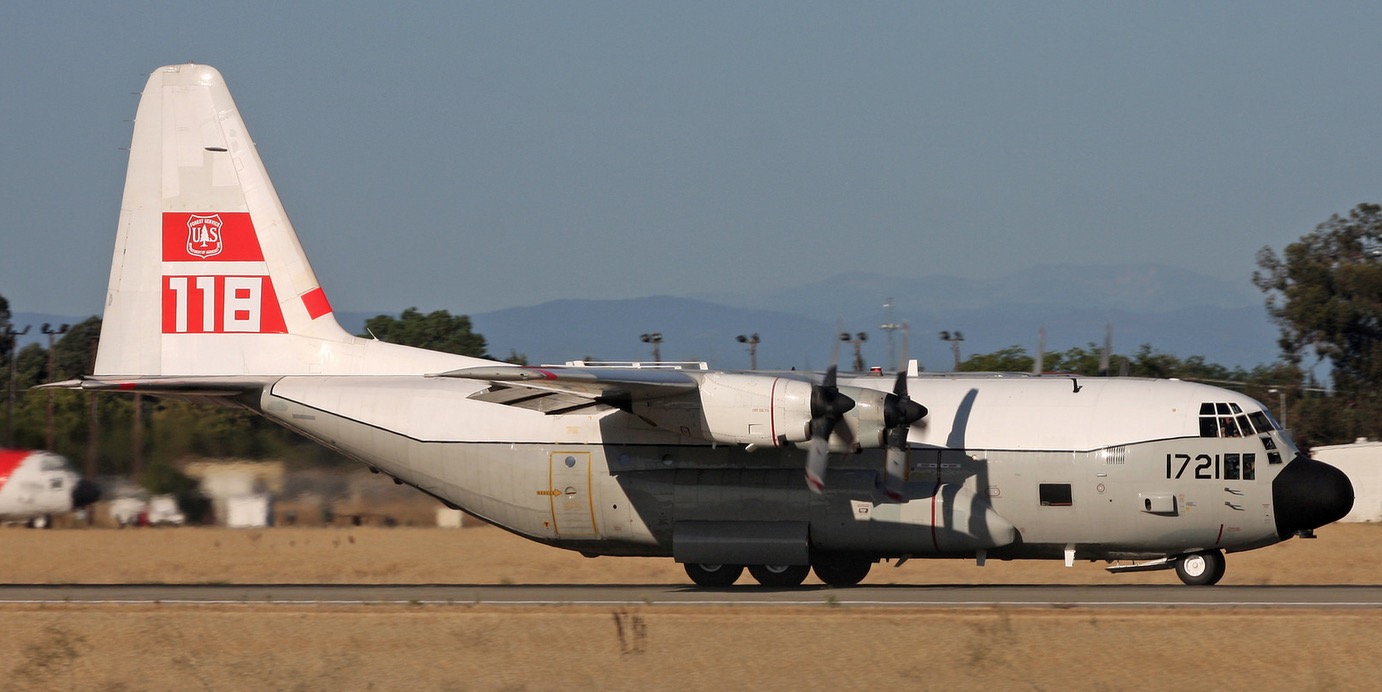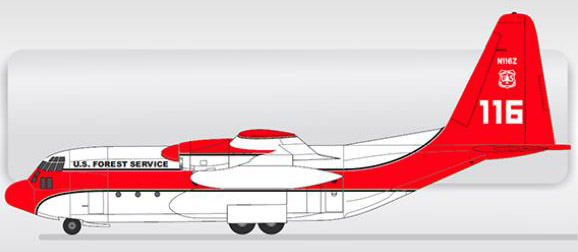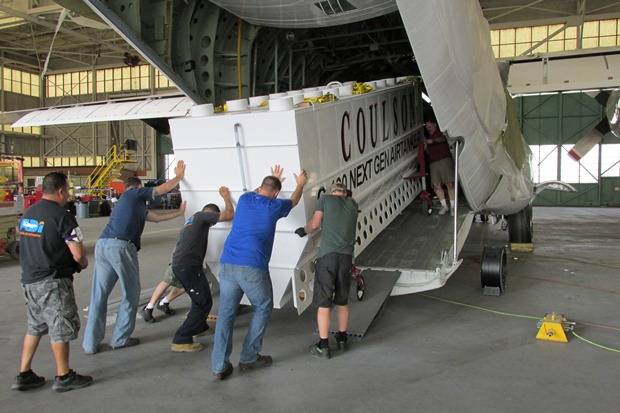This article was first published at Fire Aviation.
The U.S. Forest Service is advertising for the purchase of at least one new aircraft that will be used as an air tanker. A solicitation issued November 18, 2016 indicates that the agency intends to buy between one and seven “new production commercial aircraft to operate primarily as airtankers”. This procurement would spend the $65 million appropriated by Congress in December, 2014 “for the purpose of acquiring aircraft for the next-generation airtanker fleet to enhance firefighting mobility, effectiveness, efficiency, and safety…”.
As far as we know this will be the first time, in recent decades anyway, that a U.S. land management agency has purchased a NEW air tanker.
The seven HC-130H’s that the USFS is acquiring from the Coast Guard will be operated and maintained by contractors after they are converted to air tankers.
Coulson operates two C-130 type aircraft as air tankers, a C-130Q and an L-100-30 (382G), with the latter being an earlier demilitarized stretched variant of the C-130. As this is written they are both working on firefighting contracts in Australia during their summer bushfire season.

There is speculation that the $65 million appropriation was targeted to buy a new variant of Lockheed Martin’s C-130J, the LM-100J, a demilitarized version of the C-130J.
In Fiscal Year 2015 the Defense Department paid $88.9 million for each C-130J. The stripped down LM-130J is expected to sell for about $65 million. Lockheed is planning test flights of the new aircraft in the first half of 2017 with deliveries beginning the following year. Portions of the plane are being made in Marietta, Georgia; Meridian, Mississippi; Clarksburg, West Virginia; and India.
After the appropriations bill passed in 2014, Jason Gagnon, a spokesperson for Representative Ken Calvert of California, said that Representative Calvert, who is Chairman of the House Subcommittee on Interior and Environment, advocated for the inclusion of the provision. The final negotiations were done by House Appropriations Chairman Hal Rogers of Kentucky.
Mr. Gagnon said the funds will be spent to purchase air tankers, “a C-130 to be specific”. Representative Calvert, Mr. Gagnon said,
…supports the expansion of the airtanker fleet since there is a significant need… This provision is just a step in that direction as more aircraft will be needed… While the Forest Service has been unable to get a request to purchase new aircraft for its fleet, there’s been support within the Forest Service to modernize its fleet by purchasing new aircraft rather than continuing to rely on older aircraft passed along by other federal agencies. This idea has been around for a few years now as the Service has struggled with the costs of maintaining an old fleet. Mr. Calvert made it a priority in the bill and got it across the finish line.
Some important specifications in the USFS solicitation match those of the LM-100J, including max normal takeoff weight, capable of operating from unimproved airfields, payload, cruise speed, multiple turbine engines, and a door that incorporates stairs.
Vendors can choose to equip the aircraft with two options:
- A gravity powered retardant delivery system that would hold at least 3,000 gallons, and,
- A pallet-based seating system for 40 passengers that can be installed or removed in less than 2 hours.
The Coulson company has the contract to install retardant delivery systems in the seven HC-130H aircraft the USFS is acquiring from the Coast Guard. It is likely those will be similar to the two systems already in use in Coulson’s two C-130 type aircraft.
Mark Rey who oversaw the Forest Service as the former Under Secretary of Agriculture for Natural Resources and the Environment, has been a lobbyist for Lockheed Martin since he left the federal government through that proverbial revolving door. The company hired him to lobby the federal government to buy the company’s “firefighting equipment”. Since 2009 Mr. Rey has been paid at least $522,000 by Lockheed Martin according to Open Secrets.

Tom Harbour, the former National Director of Fire and Aviation Management for the U.S. Forest Service who retired at the end of last year has mentioned several times his affinity for the C-130 platform as an air tanker. In what we called his “exit interview”, he talked about it at 9:27 in the video, saying:
I like the 130-J and I told folks before and I’ll tell folks after, I like that 130J.
But he said he had no plans to work for Lockheed Martin after his retirement.










